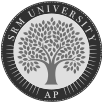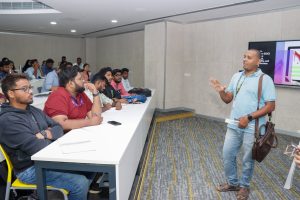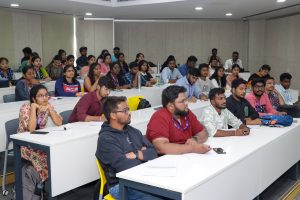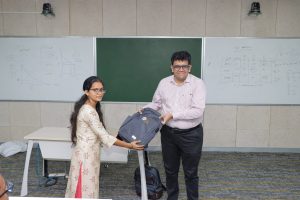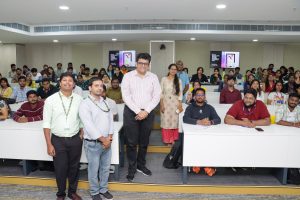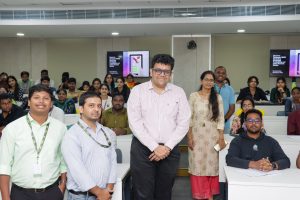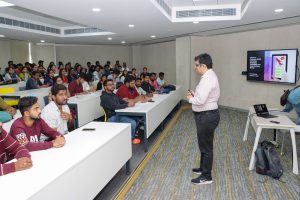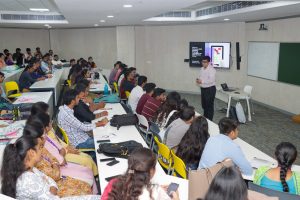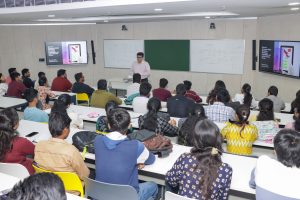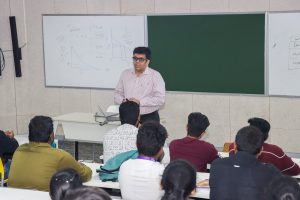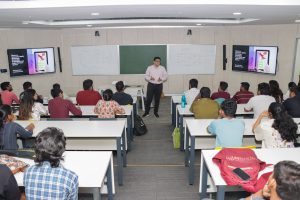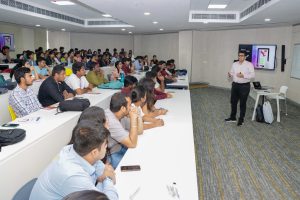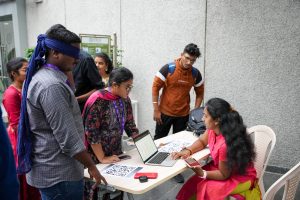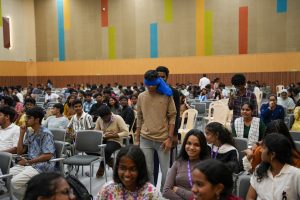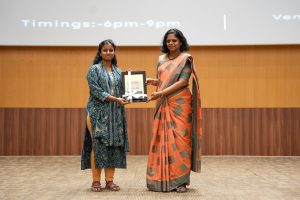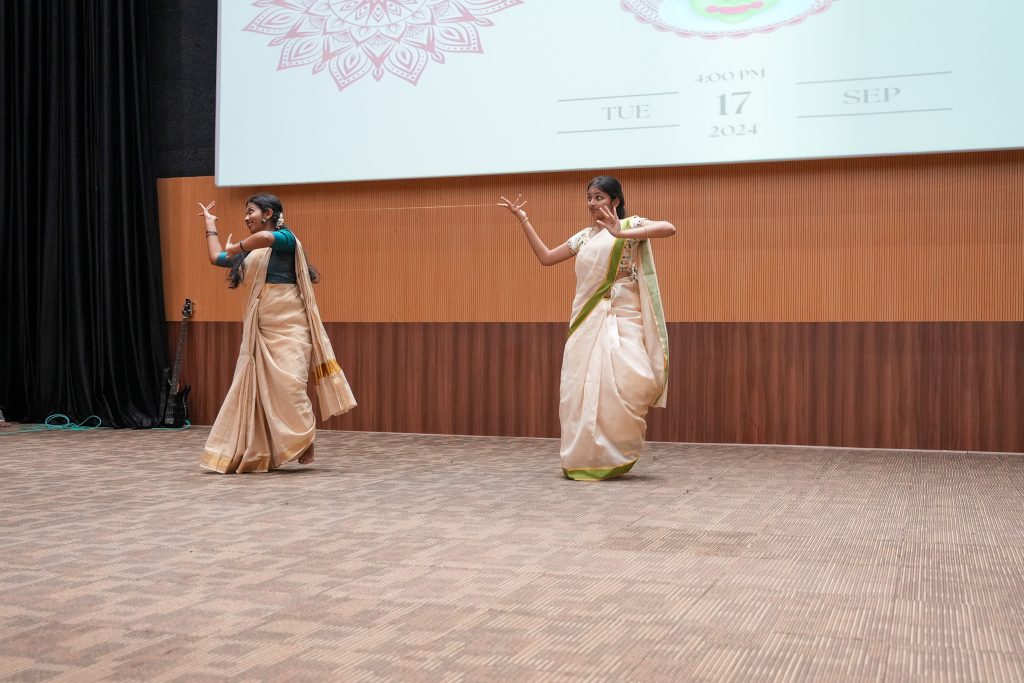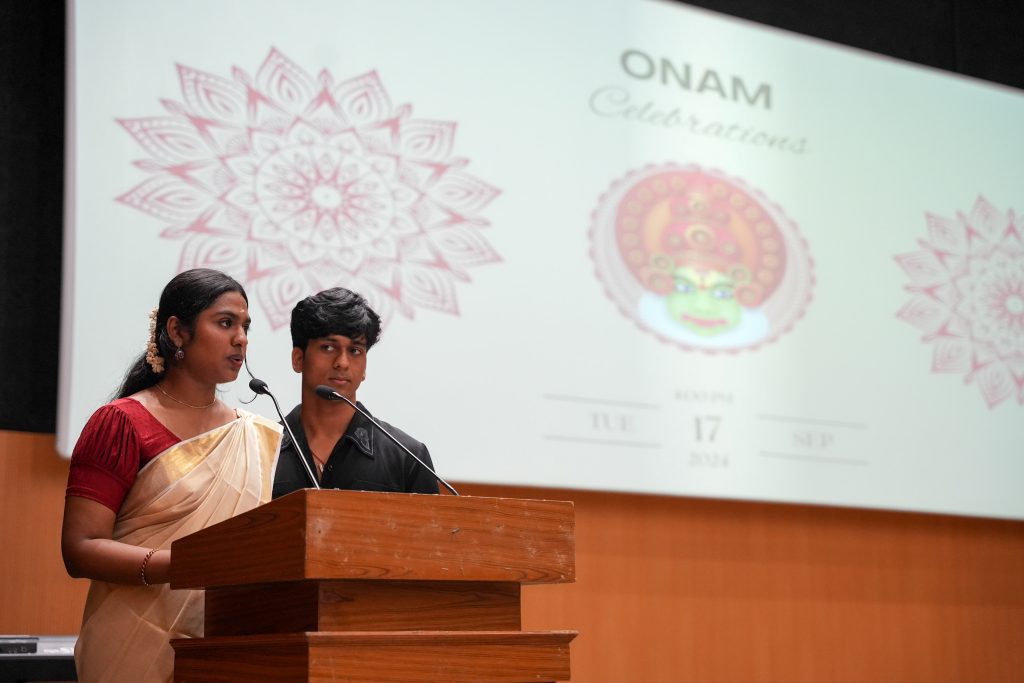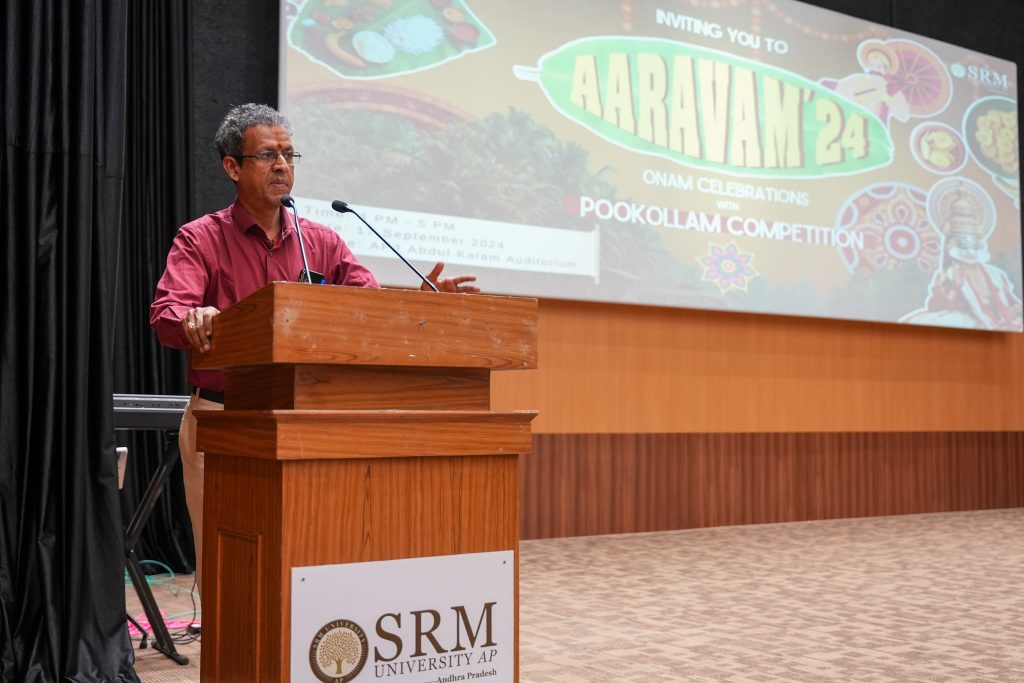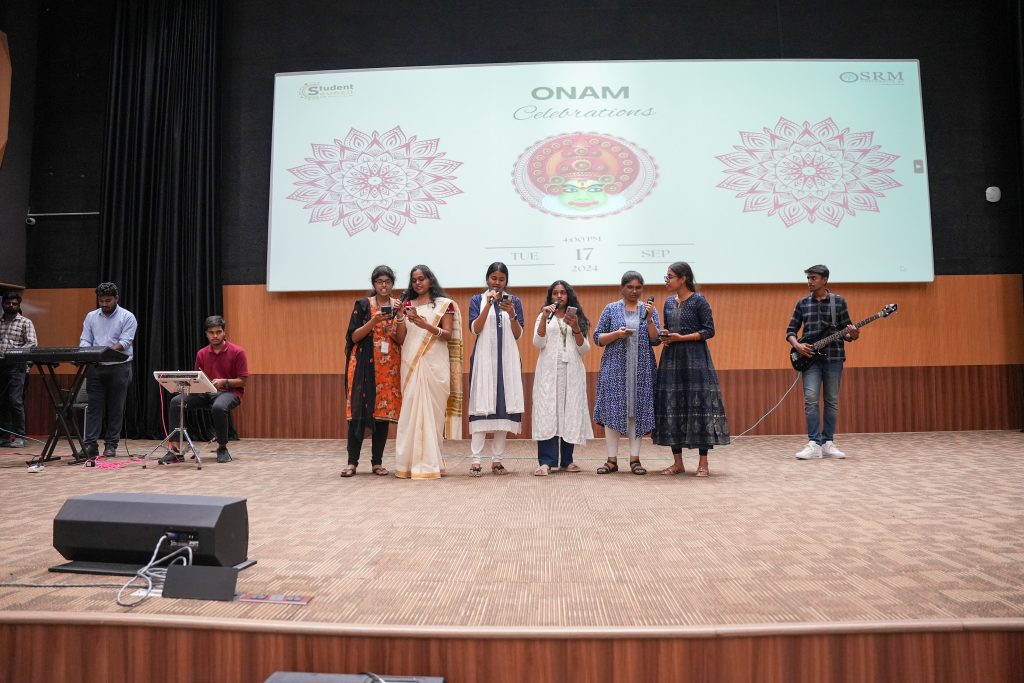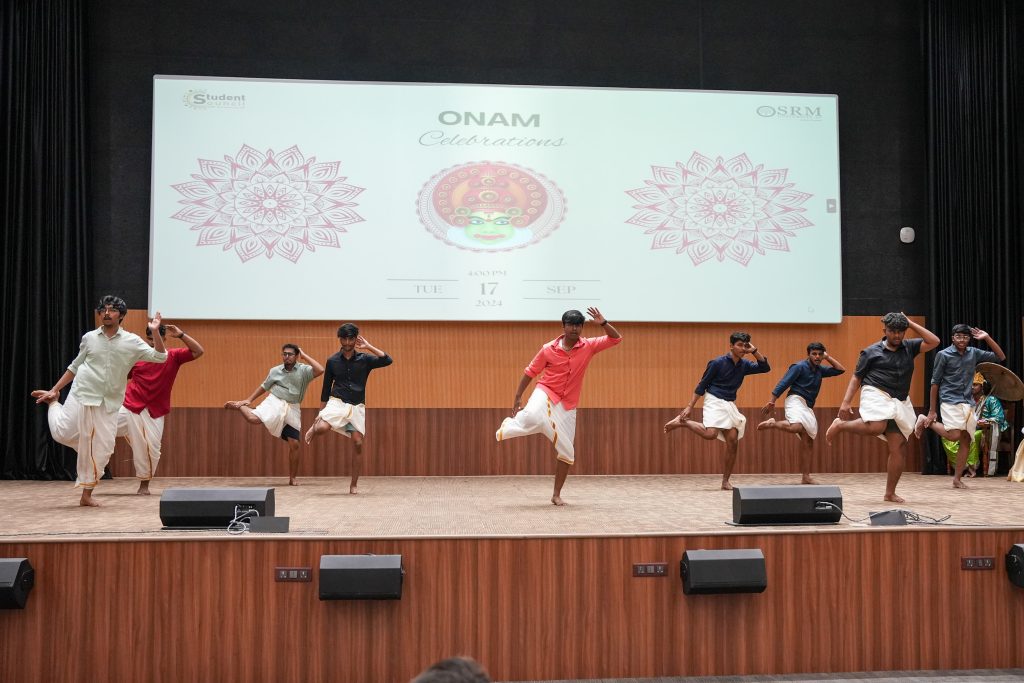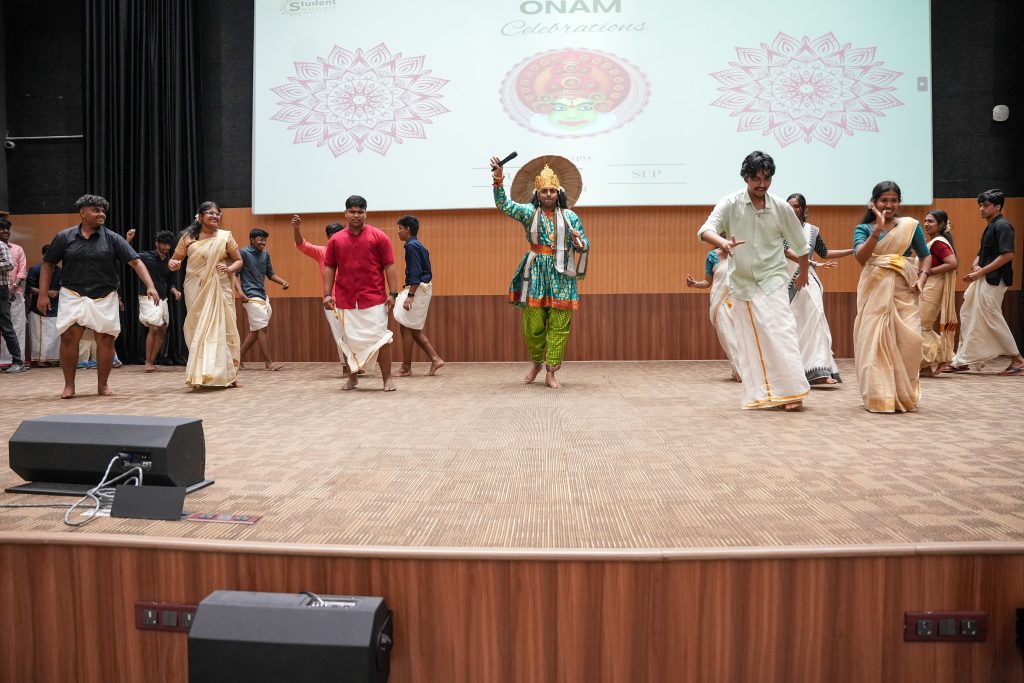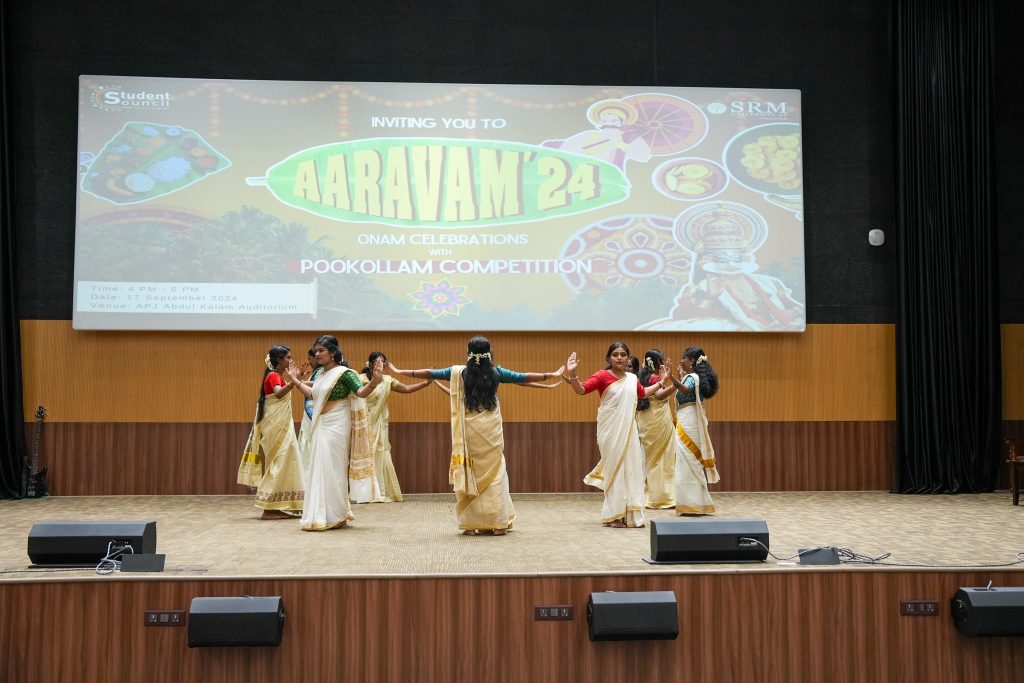Marketing Wizard Delivers Lecture on D2C Marketing
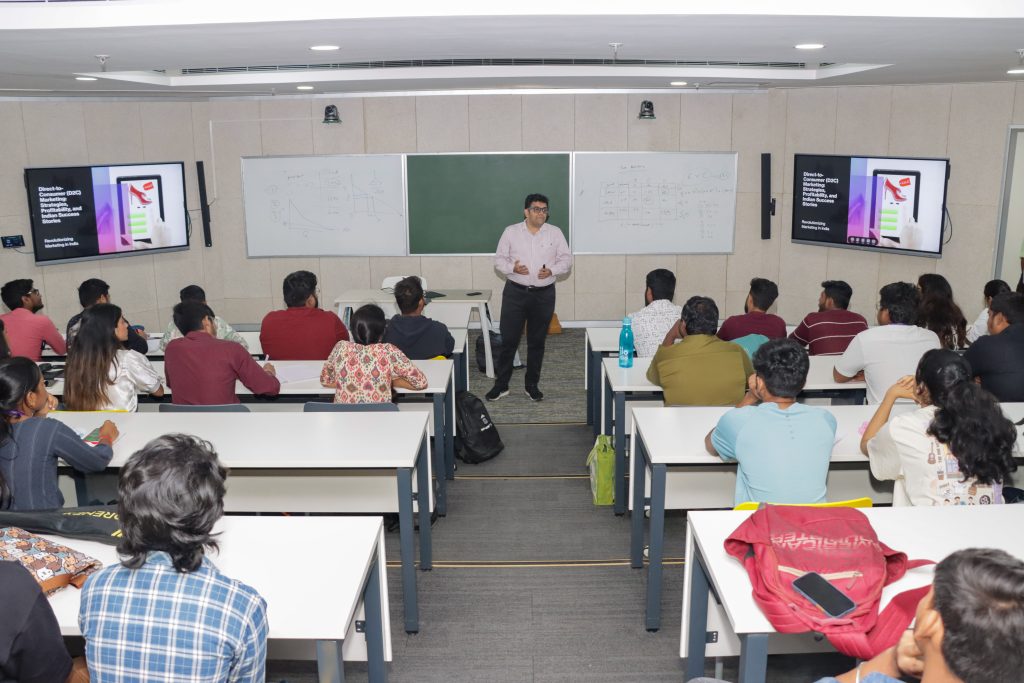 The students of Paari School of Business (PSB) had a memorable experience when Mr Siddesh Joglekar joined as a guest lecturer at SRM University-AP. The CRCS team’s dedicated efforts and the unwavering support of Prof. Bharadwaj Sivakumaran, Dean of PSB, made this unique opportunity possible. Students had the privilege of engaging in a personal interaction with the esteemed guest on September 18, 2024.
The students of Paari School of Business (PSB) had a memorable experience when Mr Siddesh Joglekar joined as a guest lecturer at SRM University-AP. The CRCS team’s dedicated efforts and the unwavering support of Prof. Bharadwaj Sivakumaran, Dean of PSB, made this unique opportunity possible. Students had the privilege of engaging in a personal interaction with the esteemed guest on September 18, 2024.
During the lecture Mr Joglekar shed light on various aspects of professional growth and marketing strategies. He placed significant emphasis on the need to foster a collaborative environment and recognising the contributions of peers.The lecture also delved into the imporatance of networking for career advancement, especially through ones’ Alumni Associations
Mr Joglekar delved into the expansive potential of Direct to Consumer (D2C) marketing, using examples from renowned companies like Twitter, Walmart, Instagram, Zomato, Amazon, Tesla, and Google to illustrate the evolution of brand images. A poignant quote from Mr Joglekar, “Companies are transformed into brands by people who dare to dream,” encapsulated the essence of the discussion, emphasising the role of visionary individuals in shaping successful brands.
Interactive elements were woven into the session, including an activity where students were tasked with creating logos that branded themselves, thus reflecting a unique aspect of their identity. This hands-on approach not only made the learning process engaging but also provided practical insights into branding.
A comparative analysis between traditional retail and D2C highlighted key differences such as distribution channels, pricing strategies, and brand control, offering a deeper understanding of the contemporary marketing landscape. The concepts of Customer Acquisition Cost (CAC) and Life-Time Value (LTV) were also explored, underscoring their importance in building a strong brand identity.
As the session neared its conclusion, Mr Joglekar introduced an innovative activity that involved reverse engineering an advertisement concept, inspired by the 2022 ad campaign featuring Mr Neeraj Chopra for Cred. This exercise prompted students to think creatively and apply the concepts discussed in a practical context.
The session wrapped up with a Q&A segment, where discussions ranged from market profitability to the advantages of D2C marketing, allowing for a comprehensive review of the topics covered. Ms Andrea Benedict extended a vote of thanks on behalf of the student fraternity of PSB, culminating in a group photo session that captured the essence of the enriching experience.
- Published in Departmental News, News, Paari Current Happenings, paari-guest-lectures
ALOHA 2024: SRM University AP Freshers’ Extravaganza
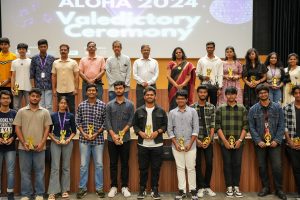 SRM University-AP celebrated Aloha 2024, a welcome to the freshers on this erudite journey. The freshers Party 2024 was an exhilarating two-day celebration filled with entertainment, talent, and camaraderie. The event welcomed freshers with a wide range of activities, competitions, celebrity appearances, and delicious food, ensuring a grand introduction to university life.
SRM University-AP celebrated Aloha 2024, a welcome to the freshers on this erudite journey. The freshers Party 2024 was an exhilarating two-day celebration filled with entertainment, talent, and camaraderie. The event welcomed freshers with a wide range of activities, competitions, celebrity appearances, and delicious food, ensuring a grand introduction to university life.
The festival began with an Inauguration Ceremony, during which dignitaries and guests lit the ceremonial lamp, symbolising new beginnings. Their words of encouragement and advice set the tone for the exciting events to follow. The festival came alive with a variety of Club Competitions, where students showcased their talents in dance, theatre, music, and other creative arts. These competitions not only brought out the freshers’ hidden talents but also fostered a sense of teamwork and fun.
The highlight of the evening was the Neon Arcade, a unique gaming zone set up with vibrant neon lights that gave a nightclub-like atmosphere. Freshers enjoyed arcade games, including bowling, under glowing lights, making it an unforgettable experience. This creative setup became one of the festival’s most talked-about features.
Meanwhile, food stalls lined the venue, offering a wide range of mouth-watering options. From street food to global cuisines, these stalls kept everyone refreshed and energised throughout the day.
Simultaneously, esports enthusiasts engaged in Esports Competitions featuring popular games like FIFA, Valorant, Free Fire, and BGMI. The fierce yet friendly competition made this segment a crowd favourite, drawing both players and fans to experience the excitement.
As with Day 1, the food stalls continued to offer a delightful culinary experience, ensuring that students had plenty of delicious options to enjoy between activities.
In the evening, the excitement reached its peak with the arrival of Nara Rohit, a famous Telugu actor, who visited the campus along with his co-stars to promote his upcoming film. The audience was thrilled as Nara Rohit interacted with fans, shared insights about his movie, and posed for photos. His presence added a touch of glamour to the festival, making Day 2 even more special.
- Published in News, student affairs news
Dr Kousik Das Receives Project Sanctioned by the Ministry of Earth Science
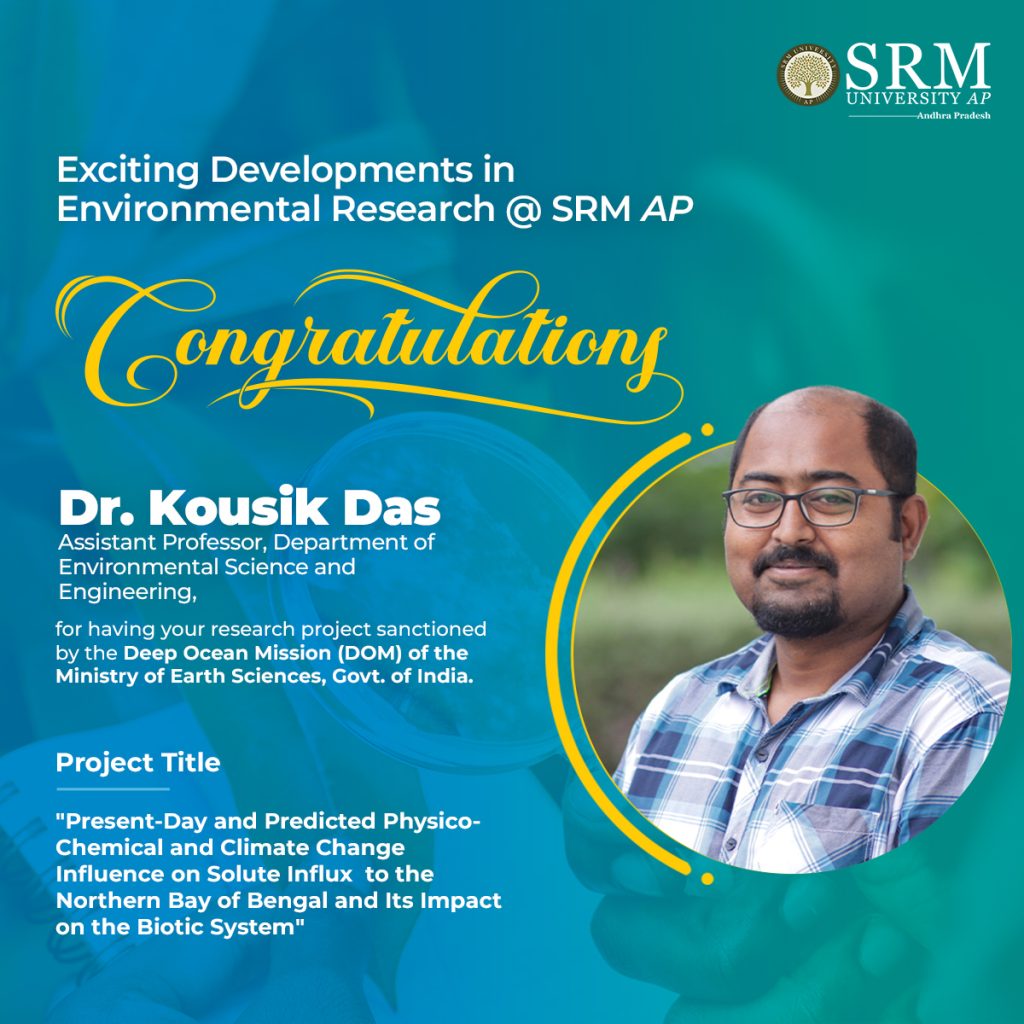
Dr Kousik Das, Assistant Professor from the Department of Environmental Science and Engineering has been sanctioned the project titled “Present Day and predicted physico-chemical and climate change influence on solute influx to Northern Bay of Bengal and its impact on biotic system”. sanctioned by the Deep Ocean Mission (DOM) of the Ministry of Earth Science, Govt. of India. Dr Kousik Das has been granted Rs. 42,42,000 as CO-PI for Rs. 1,89,19,100/- worth project, which will be undertaken in collaboration with researchers from esteemed institutes such as IIT Kharagpur and IISc Bangalore.
Explanation of the research in layperson’s terms
The proposed research work consists of a quantitative and qualitative study of seasonal solute geochemistry of ocean water and biotic diversity in marine ecosystems, along with scenarios of predicted oceanic circulation pathways at present times and futuristic cases expected in a changing climate. The study will be done by coupling physical and chemical hydrogeological techniques, which include the installation of marine observation stations and field equipment after the generation of the conceptual framework. The project will work towards making the scientific community more acquainted with the hydrodynamics and chemodynamics of the Bay of Bengal ocean water.
Practical implementation/ Social implications of your research
Seawater characteristics in the head of the Bay of Bengal are rapidly evolving due to changing influx from terrestrial sources. In particular, the head Bay region has undergone rapid variations in water quality due to extreme climate conditions, sea level rise, tidal impact, and effects of ocean acidification. Our aim is to hypothesise the climatic and hydrological processes involved in altering the ocean water nutrient and trace element cycling and their subsequent impact on the marine biohabitat.
Future research plans
- Nutrient cycle of northern Bay of Bengal
- Trace element cycle of the Bay of Bengal
- Impact of climate change on biogeochemical cycle
- Impact of hydrological drivers on marine ecosystems
- Published in Departmental News, ENVS News, News, Research News
AARAVAM 2024 Concludes with a Bang!
 Unity in diversity is more than just a saying at SRM University-AP; it’s the heart and soul of our campus. With over 6000+ students from various states and union territories and an international diversity representing 24 countries each festival serves as a bridge, drawing a closer bond amongst all. The Onam celebration, Aaravam 2024, on campus was no different, the varsity celebrated Onam on September 17, 2024.
Unity in diversity is more than just a saying at SRM University-AP; it’s the heart and soul of our campus. With over 6000+ students from various states and union territories and an international diversity representing 24 countries each festival serves as a bridge, drawing a closer bond amongst all. The Onam celebration, Aaravam 2024, on campus was no different, the varsity celebrated Onam on September 17, 2024.
The celebration orchestrated by the Directorate of Student Affairs oversaw the decoration and resplendent showcase of the Kerala culture through dance and music. The festivities commenced with the traditional Thiruvathirakali, a dance that saw students gracefully attired in the Kerala Kasavu saree, enhancing the aesthetic appeal of the day, followed by an array of cultural performances that captivated the audience. The highlight of the celebration was the appetising Onam payasam, which brought in the sweetness of the festival itself.
The appearance of King Mahabali brought a wave of joy among us all. In a heartwarming gesture, our Kerala community shared a captivating video that told the story of Onam, welcoming everyone to partake in the tradition, truly reflecting SRM AP‘s embrace of diverse cultures.
The event was graced by the presence of Registrar Dr R Premkumar, the Deans of the three schools, and King Mahabali himself, along with our faculty, staff and students. It was a day that drew us all closer, celebrating Kerala’s rich cultural tapestry. More than just a celebration, it was a reminder of the beauty in our diversity and the strength in our unity.
- Published in Departmental News, News, student affairs news

